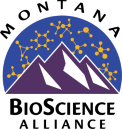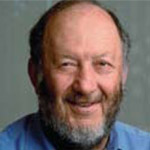Another notable Montana addition to the list of internationally renowned figures in the world of BioScience, Dr. Weissman was born and raised in Great Falls, started his scientific career at the McLaughlin Research Institute, and received his B.S. from Montana State University. In 1988 he became the first scientist to identify and isolate stem cells in any species, opening a whole new area of scientific research. This initial discovery has led to embryonic stem cells and ushered in a second biotech revolution, offering a whole new array of medicines.
The 2002 California Scientist of the Year, Weissman is currently Director of the Stanford University Stem Cell Institute, and many have touted him as a future Nobel prize winner. He discovered his passion for science when at the age of ten he read Paul de Kruif’s Microbe Hunters, which detailed the adventures of Louis Pasteur, Robert Koch, and other early bacteriologists.
Weissman is also renowned for mentoring a number of great scientists and tells his story about his own influential mentors:
“What was amazingly lucky for me is that I had role models, but in fact no one overseeing my research after high school. I began to research as a junior in high school with a pathologist who was tired of academia and moved to run a path lab practice at Montana Deaconess Hospital in Great Falls, Montana. His name was Ernst Eichwald, and he had just discovered the HY antigen by showing an inbred strain of mice that females always rejected male skin. By the end of my senior year in high school, I was mainly doing my own project. I continued in the summers during my three years of college. By then I had published with Eichwald that the unresponsive strains lacked immune reactivity genes.”
“When I entered Stanford Med School, I met Henry Kaplan who was a remarkable man; he was chief of all Radiology, had published leading-edge papers in immunology, leukemia, and radiation targets. He had also just made Hodgkin’s Disease an 85% curable disease instead of 0% and had even written diagnostic radiology of the heart text. He gave me a lab, a part-time technician, and allowed me to recruit other med students into the lab. I chose to continue my exploration of immune tolerance to try to understand the development of the immune system. I also set up a personal tutorial with Kaplan where I took his lab notebooks and reconstructed his mouse discoveries. I also read every paper he wrote. Those experiences taught me what it took to translate discoveries into potential therapies. Kaplan also sponsored me to work with Sir James Gowans at Oxford University. When I returned to finish Med School, I decided to keep doing research, and again Kaplan kept open a lab for me until I became an assistant professor in late 1968.”
“What was obvious is that I had fantastic role models, but none of them oversaw much of my research. So I was free to learn the problems and possibilities of discovery on my own. The experiments on immune tolerance led to the lineage tracing technique I developed and from there to the bone marrow origins of all immune cells, and from there to stem cells.” – Dr. Irv Weissman

